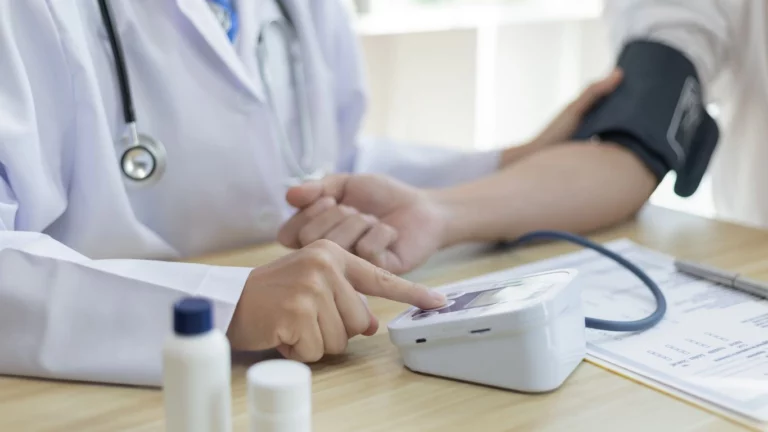Powerful Solutions to Beat GERD and Frequent Throat Infections
As someone who’s worked hands-on as a Medical Assistant in a busy Gastroenterology Clinic, I’ve seen countless patients walk through our doors complaining of persistent sore throats, coughing, or that annoying lump-in-the-throat feeling. What’s surprising is how often these issues are connected to something many don’t even suspect—GERD and frequent throat infections. It’s not just about heartburn or acid reflux; the reach of GERD goes far beyond the stomach, and the throat often ends up paying the price. This blog is a blend of medical insights and real-life experiences from behind the scenes in clinic life, so if you or someone you know is dealing with throat infections that keep coming back, you might want to stick around.
What Exactly Is GERD?

GERD stands for Gastroesophageal Reflux Disease. It’s more than just the occasional heartburn after pizza night. It’s a chronic condition where stomach acid regularly flows back into the esophagus, causing irritation. Now here’s where it gets tricky—this acid doesn’t always stop at the chest. It can travel up into the throat, sometimes without any classic heartburn symptoms at all. That’s called “silent reflux,” and let me tell you, it’s a frequent flyer in our exam rooms.
I remember one patient, a teacher, who kept getting hoarse, losing her voice, and catching what seemed like endless sore throats. Turned out, it wasn’t allergies or postnasal drip. It was GERD quietly inflaming her throat tissue day after day. Once we addressed the reflux, her “throat infections” basically vanished.
How GERD Leads to Frequent Throat Infections

This is the part a lot of people don’t realize. When that stomach acid creeps up into the throat, it can cause:
- Chronic inflammation – The tissues in the throat aren’t built to handle acid. So even small amounts can trigger inflammation, making it easier for infections to take hold.
- Voice changes and hoarseness – Especially in folks like singers, teachers, or public speakers who rely on their voice daily. Acid damage to the vocal cords mimics other infections.
- Frequent sore throats – Not from viruses or bacteria, but from the constant irritation of reflux.
And the kicker? Many people get put on antibiotics repeatedly, even though the root cause is acid, not bacteria. That’s something we saw often in clinic—patients stuck in a frustrating cycle of antibiotics, minor relief, and then another flare-up. We had to dig deeper to stop that loop.
Red Flags That It Might Be GERD and Not Just Another Infection
Here are some clues I learned to spot quickly in patient charts and conversations:
- Symptoms that come and go with eating or lying down
- A hoarse voice first thing in the morning
- Frequent throat clearing or that sensation of something “stuck” in the throat
- No fever, swollen glands, or white spots on the tonsils (common with actual infections)
These subtle signs are often missed in a primary care setting, but in GI, we learn to connect the dots. And once you do, the difference it makes for the patient is huge. I’ve seen people go from monthly strep-like episodes to completely symptom-free just by managing their reflux more effectively.
Lifestyle Habits That Make GERD (and Throat Issues) Worse

If you’re dealing with both GERD and frequent throat infections, a few daily habits could be secretly making things worse. These are the usual suspects we’d go over with patients during consultations:
- Late-night snacking – Eating within 2 hours of bedtime? Big no-no for reflux.
- Smoking or vaping – Both lower the strength of the lower esophageal sphincter, letting acid sneak up easier.
- Too much caffeine or alcohol – I know, the double shot espresso is tempting, but it relaxes that same muscle, again letting acid rise.
- Being overweight – Even a little extra pressure on the stomach can push acid upward.
Helping patients recognize these triggers—and offering real-life ways to adjust—was a big part of my job. You can’t just hand someone a list and expect miracles. We’d chat about small swaps, like elevating the head of their bed, sipping herbal tea instead of coffee, or even trying a food diary. Little changes, but they add up.
Diagnosing GERD-Related Throat Issues: What to Expect

When patients come into the clinic complaining of frequent throat infections but antibiotics don’t seem to help, we start digging deeper into the possibility of GERD. From my experience, getting the right diagnosis is key because treating throat infections without addressing the acid reflux is like putting a band-aid on a leaky pipe.
The diagnostic process usually begins with a detailed history. I’d ask questions about when symptoms occur, what makes them better or worse, and whether there are any accompanying issues like heartburn, regurgitation, or a sour taste in the mouth. Sometimes patients don’t realize their symptoms are linked to reflux until they hear the questions—and that’s where experience really helps.
After the history, the doctor might perform or order some tests, including:
- Endoscopy: This lets the doctor see inside the esophagus and throat for signs of irritation or damage.
- 24-hour pH monitoring: A small probe measures acid levels in the esophagus to confirm reflux, especially if symptoms are subtle.
- Esophageal manometry: This test checks the muscle function of the esophagus and lower esophageal sphincter.
Back at the clinic, I often helped prepare patients for these tests and explained what to expect. Nervousness about procedures is normal, but a clear explanation usually helps ease anxiety. I’d also reassure them that these tests are critical to tailor treatment effectively, especially when frequent throat issues are involved.
Treatment Options for GERD and Frequent Throat Infections

Once GERD is confirmed as the culprit behind throat problems, the treatment plan is usually a mix of lifestyle changes, medications, and sometimes more specialized therapies. In clinic, it was always rewarding to see how even small tweaks could make a world of difference for patients struggling with those persistent throat infections.
Lifestyle Modifications That Actually Work
Here’s the truth: telling someone to just “avoid spicy foods” or “lose weight” isn’t enough. Patients need practical, realistic advice that fits their life. From my time working alongside gastroenterologists, these are the lifestyle changes we found to be most effective:
- Elevate the head of the bed: Sleeping with the upper body raised about 6-8 inches helps keep acid down during the night.
- Avoid tight clothing: Tight belts or waistbands increase abdominal pressure and push acid upward.
- Timing of meals: Stopping eating at least 2-3 hours before lying down can reduce nighttime reflux significantly.
- Identify trigger foods: It varies person to person, but common triggers include caffeine, chocolate, fatty or fried foods, and carbonated drinks.
In many cases, these adjustments are the foundation for healing. I remember a patient who was a nurse and had a hard time quitting caffeine, but cutting back and switching to herbal teas in the afternoon made a huge difference in her throat irritation and overall energy levels.
Medications: When Lifestyle Changes Aren’t Enough
Sometimes, lifestyle changes need a boost. That’s where medications come in. Proton pump inhibitors (PPIs) like omeprazole or lansoprazole are the most common prescriptions, working by reducing stomach acid production.
We also see patients benefit from H2 blockers or antacids for occasional symptom relief. One thing I noticed is that patients often expect immediate relief, but GERD-related throat symptoms can take weeks to improve, so patience is key.
Another important point from my clinical experience is medication adherence. Some patients stop taking their meds too soon once symptoms ease, only to have the reflux flare back up. Educating patients on how and when to take these drugs can prevent relapses and reduce the cycle of repeated infections.
When GERD Leads to Complications Beyond Throat Infections

Chronic untreated GERD doesn’t just cause throat infections; it can lead to more serious issues. Some of the complications I’ve witnessed in our clinic include:
- Laryngitis: Persistent inflammation of the voice box, making speaking painful or difficult.
- Esophagitis: Damage to the esophageal lining that can cause ulcers or bleeding.
- Barrett’s esophagus: A precancerous change in the esophageal lining due to long-term acid exposure.
These are conditions nobody wants to face, and early management of GERD symptoms can help prevent them. It always struck me how empowering patients felt when they understood that their throat symptoms weren’t “just a cold” or “something they had to live with,” but a treatable medical issue.
Overall, navigating GERD and its impact on throat health is about looking at the full picture—not just treating infections, but addressing the root causes. My time in the gastroenterology clinic taught me how often reflux hides behind recurring throat problems and how much difference proper care can make.
Long-Term Management: Living Well with GERD and Preventing Frequent Throat Infections

Managing GERD—especially when it’s causing frequent throat infections—is a marathon, not a sprint. From my time working closely with patients, I learned that ongoing care and consistent habits are the real game changers. It’s not about quick fixes or popping pills whenever symptoms flare; it’s about understanding your body, recognizing patterns, and building a lifestyle that keeps reflux under control over the long haul.
One of the biggest pieces of advice I’d share, from both my medical experience and the countless conversations I had with patients, is that awareness is power. When you know which foods, habits, or situations trigger your symptoms, you can actively avoid them rather than just reacting after the fact. It’s a mindset shift that makes all the difference.
Practical Tips to Keep GERD in Check Daily
- Stay upright after meals: I always reminded patients to avoid lying down right after eating—whether that means taking a walk or just sitting up for a while.
- Keep a symptom journal: Jotting down what you eat, your activities, and when symptoms hit can help identify triggers you might not notice otherwise.
- Maintain a healthy weight: Even a few pounds can influence reflux, so gradual, steady weight management pays off.
- Mind your medications: Some common drugs, including NSAIDs and certain blood pressure meds, can aggravate GERD. Always check with your healthcare provider if you think your meds might be a factor.
- Practice stress management: Stress doesn’t cause GERD, but it can worsen symptoms. Techniques like yoga, meditation, or even simple breathing exercises can help calm things down.
One patient I remember vividly was a graphic designer whose work deadlines often made her skip meals or eat fast food on the go. By slowly introducing these lifestyle changes, she noticed her throat cleared up, and she finally felt comfortable speaking again without that constant irritation.
Surgical and Advanced Treatment Options: When to Consider Them

While most people manage well with lifestyle adjustments and medications, there are times when these aren’t enough. For a smaller number of patients—especially those with severe reflux or complications like Barrett’s esophagus—more advanced treatments might be necessary.
From what I saw in the clinic, referrals to gastroenterologists for surgical evaluations were sometimes the next step. Procedures like Nissen fundoplication help strengthen the lower esophageal sphincter by wrapping part of the stomach around it, preventing acid from traveling upward. There are also newer, less invasive options like endoscopic therapies that aim to reduce reflux with minimal downtime.
These treatments aren’t for everyone, and the decision is made carefully with input from the patient, their lifestyle needs, and overall health. It’s always important to exhaust lifestyle and medication options first, but knowing that surgical alternatives exist can offer peace of mind to those struggling with persistent symptoms.
Personal Reflections: What I Learned Working with GERD Patients
One thing that really stuck with me during my time in gastroenterology was how personal and unique the experience of GERD is for each patient. Some might have blazing heartburn but no throat symptoms, while others barely feel heartburn yet suffer constant throat irritation and infections.
Listening closely and validating these experiences made all the difference. It’s easy to overlook throat symptoms if you’re just thinking about the stomach, but in reality, GERD is a whole-body issue that requires a comprehensive approach.
Also, I learned the value of patience—not only for the patients but for the healthcare team. GERD management often requires trial and error, fine-tuning medications, and tweaking lifestyle advice. And that’s okay. Healing takes time.
So if you’re dealing with frequent throat infections and suspect GERD might be part of the problem, remember: you’re not alone, and there are effective strategies to help you breathe easier, speak clearly, and live comfortably again.
Helpful Resources and References
- American Gastroenterological Association — Reliable info on GERD diagnosis and treatment
- Patient resources on reflux and esophageal conditions
Disclaimer
This article is for informational purposes only and does not replace professional medical advice, diagnosis, or treatment. If you are experiencing persistent throat infections or symptoms of GERD, please consult a healthcare professional for personalized care.

Camellia Wulansari is a dedicated Medical Assistant at a local clinic and a passionate health writer at Healthusias.com. With years of hands-on experience in patient care and a deep interest in preventive medicine, she bridges the gap between clinical knowledge and accessible health information. Camellia specializes in writing about digestive health, chronic conditions like GERD and hypertension, respiratory issues, and autoimmune diseases, aiming to empower readers with practical, easy-to-understand insights. When she’s not assisting patients or writing, you’ll find her enjoying quiet mornings with coffee and a medical journal in hand—or jamming to her favorite metal band, Lamb of God.






